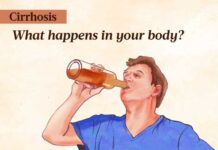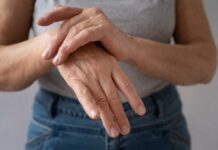
A warm embrace, a gentle caress, a comforting hand—these tender acts of physical touch may seem like simple gestures, but a new study suggests they are vital for our health and happiness.
In an analysis of over 200 studies, researchers have found wide-ranging benefits that human contact can provide, from easing pain and anxiety to boosting the growth of fragile newborns.
From Hugs to Massage Therapy
The results of the meta-analysis were published in Nature Human Behavior.
Researchers from Germany and the Netherlands examined a total of 212 studies that combined data from nearly 13,000 infants, children, and adults. These studies compared people who experienced physical touch during experiments to those who did not.
The physical touch varied, including person-to-person, person-to-animal, person-to-object, and even person-to-robot interactions.
One of the studies reviewed indicated that a daily 20-minute gentle massage for six weeks decreased aggressiveness and stress levels in elderly people with dementia.
A clinical trial, albeit small, study found that students with attention deficit hyperactivity disorder experienced improved moods and longer-term classroom behavior after receiving 20-minute massage therapy sessions twice a week.
A research article, published in PLOS ONE, suggests that hugging can help reduce the fight-or-flight panic felt by a person experiencing a panic attack.
Nuances of Successful Touch Therapy
The research team found that the frequency of touch was more important than the duration.
“Increasing the duration of individual sessions did not improve health effects,” the researchers wrote. “In fact, we found some indications of negative relationships in adults for cortisol and blood pressure.”
This is likely due to overstimulating the sympathetic nervous system, which can engage the hypothalamus, pituitary, and adrenal glands, according to the paper.
Very few touch therapies lasted less than five minutes, leaving it “unclear whether very short interventions have the same effect” as a 20-minute massage.
The type of touch also tended to drive the health benefits more than the duration. For example, a touch on the head was found to be more beneficial than a touch on the torso or arm.
The identity of the person providing the touch therapy only mattered for infants. For adults and children, knowing the person did not influence the health benefits. But for infants, touch from a parent was more beneficial than touch from medical staff.
Human-to-human touch was the most effective for driving health benefits. Robotic touch, introduced during the COVID-19 pandemic “to accommodate the need for touch in individuals with small social networks,” such as those who were isolated or institutionalized, was not as effective in improving mental health as human-to-human touch.
However, some human-to-object touch, like cuddling a stuffed animal or soft blanket, did offer support and improve well-being, and the researchers suggested this should be explored further.
Important Notice: This article was also published at www.theepochtimes.com by Amie Dahnke where all credits are due.
Disclaimer
The watching, interacting, and participation of any kind with anything on this page does not constitute or initiate a doctor-patient relationship with Dr. Farrah™. None of the statements here have been evaluated by the Food and Drug Administration (FDA). The products of Dr. Farrah™ are not intended to diagnose, treat, cure, or prevent any disease. The information being provided should only be considered for education and entertainment purposes only. If you feel that anything you see or hear may be of value to you on this page or on any other medium of any kind associated with, showing, or quoting anything relating to Dr. Farrah™ in any way at any time, you are encouraged to and agree to consult with a licensed healthcare professional in your area to discuss it. If you feel that you’re having a healthcare emergency, seek medical attention immediately. The views expressed here are simply either the views and opinions of Dr. Farrah™ or others appearing and are protected under the first amendment.
Dr. Farrah™ is a highly experienced Licensed Medical Doctor certified in evidence-based clinical nutrition, not some enthusiast, formulator, or medium promoting the wild and unrestrained use of nutrition products for health issues without clinical experience and scientific evidence of therapeutic benefit. Dr. Farrah™ has personally and keenly studied everything she recommends, and more importantly, she’s closely observed the reactions and results in a clinical setting countless times over the course of her career involving the treatment of over 150,000 patients.
Dr. Farrah™ promotes evidence-based natural approaches to health, which means integrating her individual scientific and clinical expertise with the best available external clinical evidence from systematic research. By individual clinical expertise, I refer to the proficiency and judgment that individual clinicians acquire through clinical experience and clinical practice.
Dr. Farrah™ does not make any representation or warranties with respect to the accuracy, applicability, fitness, or completeness of any multimedia content provided. Dr. Farrah™ does not warrant the performance, effectiveness, or applicability of any sites listed, linked, or referenced to, in, or by any multimedia content.
To be clear, the multimedia content is not intended to be a substitute for professional medical advice, diagnosis, or treatment. Always seek the advice of your physician or other qualified health providers with any questions you may have regarding a medical condition. Never disregard professional medical advice or delay in seeking it because of something you have read or seen in any website, video, image, or media of any kind. Dr. Farrah™ hereby disclaims any and all liability to any party for any direct, indirect, implied, punitive, special, incidental, or other consequential damages arising directly or indirectly from any use of the content, which is provided as is, and without warranties.








